Let's imagine that you finally decided to have a kitten. Or accidentally picked up a cat on the street, and after spending a couple of hours with him, they realized that they were made for each other. Immediately after realizing your action, you will think about the everyday side of the question: where will your new friend sleep, how to handle him, whether he needs vaccinations, and most importantly - how to feed a new family member. Getting lost on the shelves with cat food is very easy, but you can never be sure whether the selected product is suitable for your pet. In this article, we will consider premium cat food, analyze the pros and cons and study its popular manufacturers.
Structure
The composition of dry food is the first thing you should pay attention to when choosing a food for a kitten. Even if you decide to purchase premium food, this does not mean that there will be no components in it that, although they are useful, can be strong allergens. None, even the most attractive packaging, can guarantee that the selected premium food will completely suit your pet.
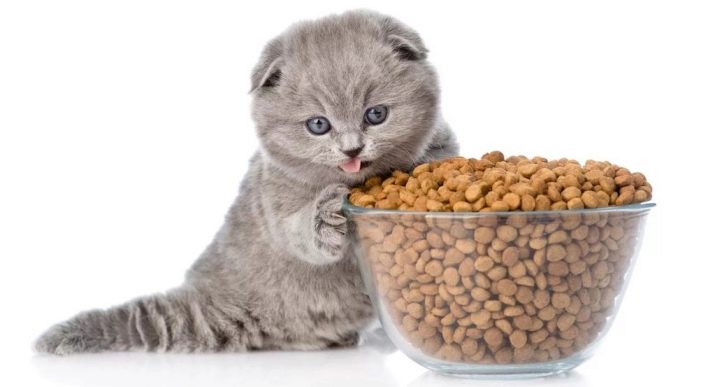
The composition often contains a lot of obscure abbreviations denoting the corresponding nutritional supplements, but there is no need to study them all. One only needs to know that the first word at the beginning of the list of ingredients is the feed component, which makes up most of its mass.
Further items are descending - from the largest to the minimum.
Knowing this, one can understand that if, for example, food supplement B12 comes first, then such food should be carefully placed on the shelf in the store and never buy it. Kitten food should contain as much protein as possible so that their bone structure develops as fully as possible. The minimum protein content in premium feeds starts at 30%, that is, protein - what should be in the composition in the first place. But the protein in the feed can have different names, for example, it can be of animal or plant origin. In this case, preference is given to food that contains animal proteins. Even if it is presented in the form of flour, it will be much more useful than the plant component.
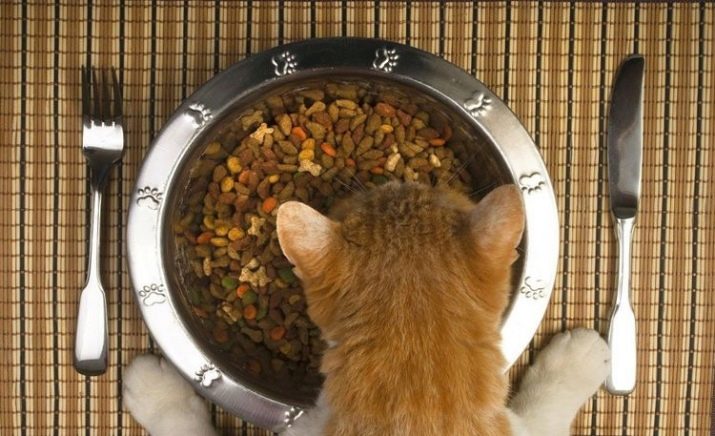
As you can understand, the less flavor enhancers, preservatives, and other chemical additives in the composition of the feed, the more useful this product. In good feed, which includes premium feeds, a moderate amount of fat is allowed - they are necessary for the developing body and contribute to the health of the immune and nervous systems, skin and coat. But too much fat in the composition leads to obesity in cats, problems with digestion and the circulatory system, so you should pay close attention to their amount.
With caution, it is worth choosing food, where any plant elements or cereals are indicated at the top of the list, since plants often cause allergies in adult cats, and for a small kitten, such an addition can be fatal. The most common allergen is corn and all its derivatives.
Also undesirable components - salt, sugar, wheat and any yeast.
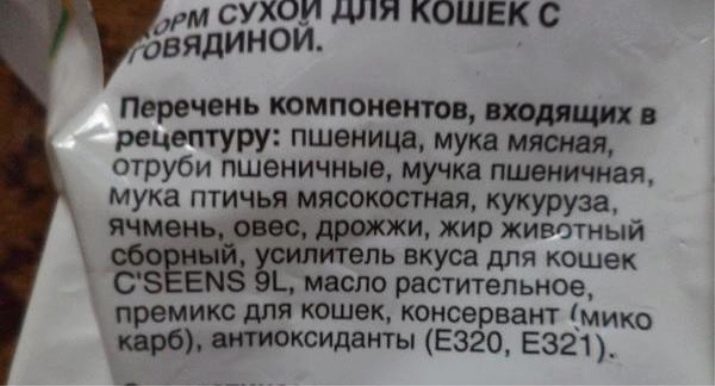
Features, pros and cons
All animal feeds are divided into four categories:
- economy;
- Premium
- super premium;
- holistic;
The list is arranged in increasing quality - from the cheapest, but practically useless, and sometimes harmful, to the most balanced and nutritious, but at a rather high price. The premium and super premium categories have a moderate price and the same nutritional properties. In addition, a certain feed on the market can claim to be a super premium, but in its composition it is premium and, accordingly, vice versa.
Therefore, the most favorable category of feed is premium, but, like others, this species has its pros and cons.

Let's start with the pleasant. Pros:
- starting from the premium category and above, the feed necessarily contains the necessary set of nutrients (carbohydrates, proteins, fats), which is represented by elements of higher quality than in the economy class;
- specialized dry feeds for premium kittens have smaller granules, which are much more convenient for use and easier to digest;
- the most acceptable combination of price and quality.
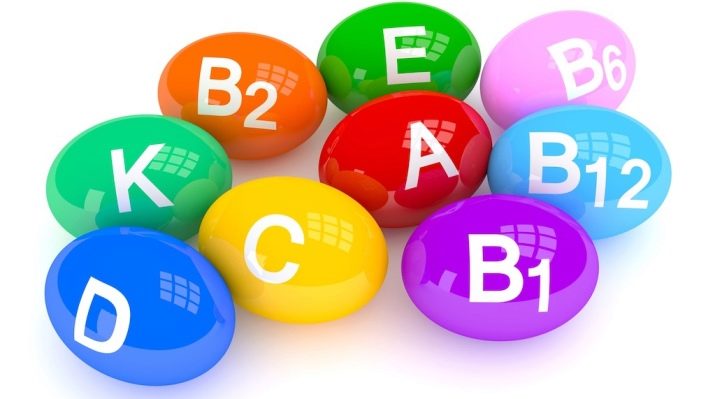
And now for the cons. They are few in comparison with the feed of the economy category, but they are still present.
- Higher price compared to economy feed. In fact, this is a purely formal minus, since you need to understand that premium feed is made from higher quality raw materials without the addition of soy meat and gluten.
- Presence of preservatives and additives. Again, when compared with the economy category, this is an absolutely formal minus, since a certain amount of additives will be present in the feed of any category, and the higher this category, the less will be. Want to be sure that your pet eats natural foods without chemicals - cook it yourself.
- Nutrient content in premium feeds is still not enoughTherefore, you should additionally purchase useful supplements for your pet. To find out what vitamins a kitten needs during a certain period of life, a consultation with a veterinarian will help you.
- The only significant minus - on the packaging information about the exact percentage of certain feed elements is rarely indicated. Such information is usually indicated only by reputable brands that recognize the need for supplements.
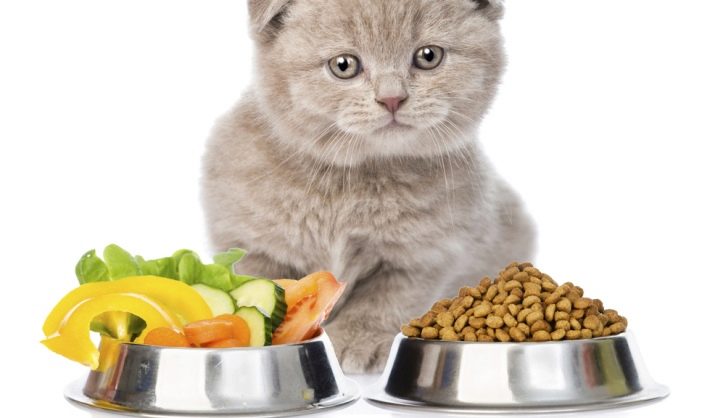
Selection rules
The premium feed category also implies a variety of both brands and purposes of each individual line. In order not to get completely lost in this, we will try to identify the search algorithm for the most suitable food for the kitten.
- Price category. In our case, this is premium food.
- The purpose of the feed. As a rule, each line has an additional postscript that helps customers make their choice. Food suitable for us will indicate that it is intended for kittens from a certain age.
- Structure. What should be present and what should be at a minimum among the components, we have already figured out.
- Manufacturer. What to do if the feed of several brands has approximately the same indicators? To do this, you need to study the manufacturers rating.
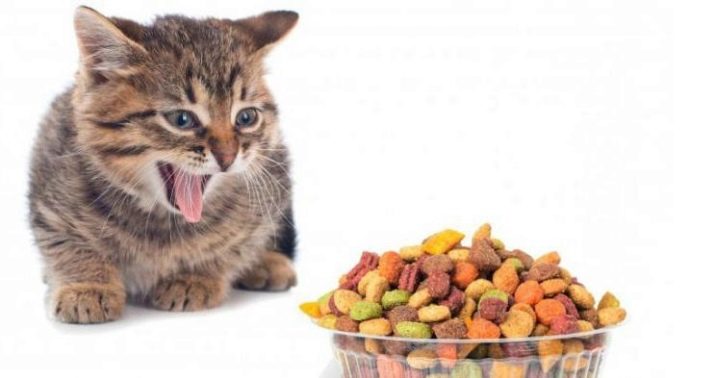
Manufacturers rating
If the feeds of several brands have approximately the same composition, when choosing a specific product for a kitten, it is easy to get confused. In this case, it is worth focusing on the ratings of manufacturers and consumer reviews.
Orientjen
Canadian manufacturer. This food is suitable for animals of any age.

Pros:
- suitable for animals of any breed;
- premium food for all ages, its composition perfectly matches all the changes in the growing body of the pet;
- the percentage of protein is 85%;
- the main source of protein is poultry meat (turkey, chickens), fish, eggs;
- cereals are replaced by vegetables and fruits;
- almost complete absence of preservatives and flavorings;
- moderate amount of fat, as well as the content of omega-3;
- the food is balanced, has all the trace elements necessary for the cat's body;
- the presence of phytocomponents;
- good reviews from consumers around the world.
Minus one - overpriced.
Josera
German-made food is suitable for kittens from 2 months to a year, as well as for lactating and pregnant cats.
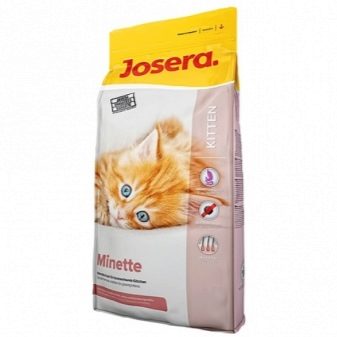
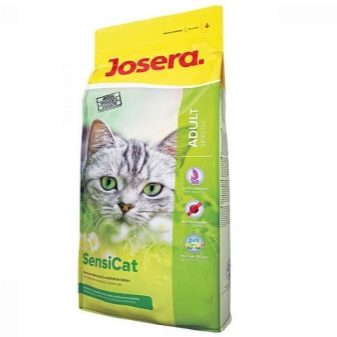
Pros:
- balanced composition;
- high-calorie food, therefore provides the kitten with the necessary amount of energy;
- easy to digest;
- low preservative content;
- contains dietary fiber;
- reasonable cost.
Among the shortcomings, it can be distinguished that the meat is contained in the feed not in its pure form, but in the form of flour, which can create difficulties during digestion.
Brit Premium
Czech-made food suitable for kittens from month to year.

Pros:
- well balanced, has almost all trace elements in the composition necessary for the full development of the pet;
- suitable for kittens of any breed;
- 40% of chicken in the composition, which is a very good indicator;
- acceptable price.
Minuses:
- a large amount of chicken in the composition can be explained by the fact that offal was not added to the feed in its pure form, but offal;
- the presence of yeast.
Purina proplan
French production. Suitable for kittens from month to year, nursing and pregnant cats.
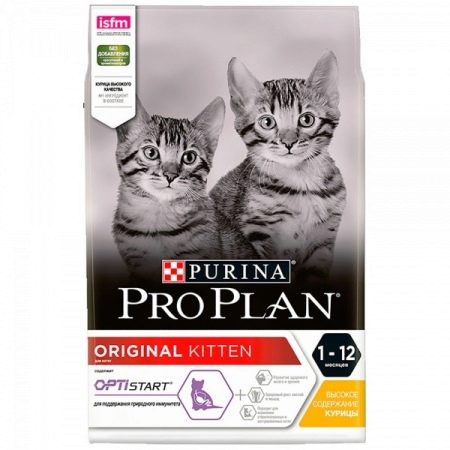
Pros:
- balanced composition;
- the main source of protein is chicken, fish, eggs;
- It is represented by small granules, which makes the process of eating and digesting food easier for kittens;
- acceptable price.
Minuses:
- contains yeast;
- contains flavorings;
- incorporates plant components, which can cause allergies
Hill's science plan
Country of origin - Netherlands. Suitable for kittens, lactating and pregnant cats.
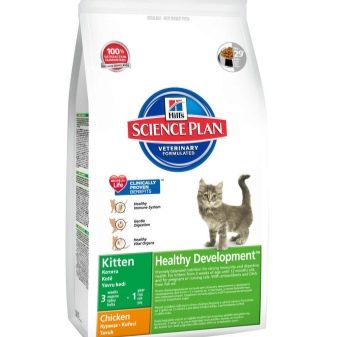
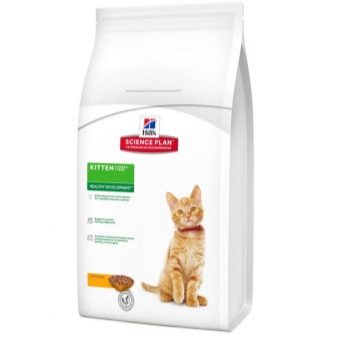
Pros:
- balanced composition;
- the main source of protein is either chicken (Kitten Plan Healthy Development line) or tuna (Kitten Healthy Development Tuna line);
- high percentage of protein;
- high quality of contained elements;
- low amount of preservatives.
Minuses:
- contains salt;
- contains corn, which is one of the most powerful feline allergens;
- high price.
Royal canin
French production. It has several rulers for different ages of kittens. From 1 to 4 months (including for lactating and pregnant cats including) - “Mother & baby cat”. From 4 months to a year - "Royal Canin Kitten 36". There is also a line designed specifically for Persian kittens - “Royal Canin Kitten Persian 32”.
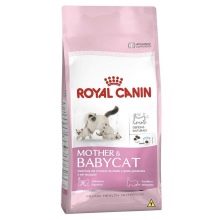
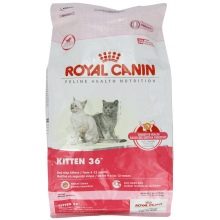
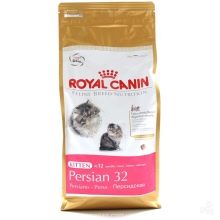
Pros:
- all lines are balanced in composition;
- Separate formula for each age category;
- acceptable price.
Of the minuses, it can be noted that the company has a branch and production in Russia, which is why it cannot provide the promised European quality.In this regard, this is the most controversial feed, with many conflicting reviews.
Thus, the list of feeds from best to least recommended looks like this:
- Orijen;
- Josera;
- Brit Premium
- Purina Proplan;
- Hill's Science Plan;
- Royal Canin.
An overview of the famous premium kitten feeds is in the next video.


































